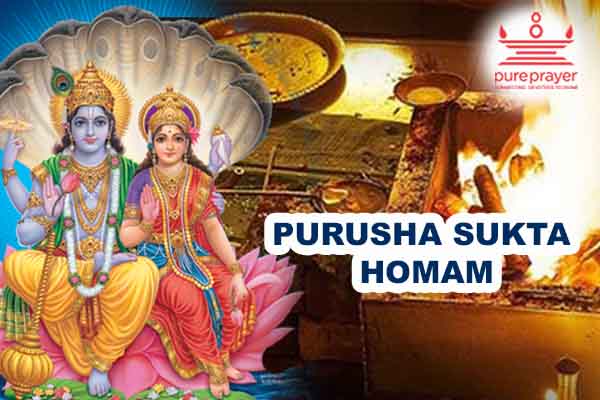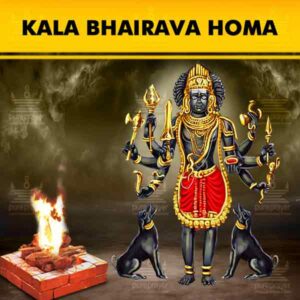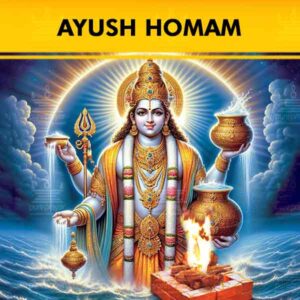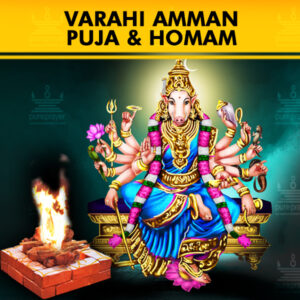Purusha Sukta Homam
PurePrayer provides best and highly meritorious Pandits, Purohits, Tamil Vadhyars for Purusha Sukta Homam in your homes and other important Kshetras for performing the Homam. You can consult our astrologers for all your Puja needs and to plan the event well in advance. We offer highly hygienic and sanitized Homa Kuteera or Kshetra destinations to choose for a safe and satisfactory puja. We can conduct the puja through a video call or perform puja at a Kshetra on your behalf and send you a video of the puja.
PurePrayer is India’s best online puja platform and an Official Partner for Govt. Of Karnataka for Online Pujas and Sevas bookings in Muzrai Temples. PurePrayer offers best Purohit Services for your home and office Puja needs.
Purusha Sukta Homam | Significance
Purusha Sukta Homam is performed to fulfil the desire of begetting a right child. Purusha Sukta homa is advised for couple who are anxious to get a baby. Also for the couple who may be expecting. This homa helps reducing the possibilities pregnancy complications and said to result in healthy and intelligent children like the lord himself.
This Purusha Sukta homam ranks alongside with Putra Kameshti homa and Santana Gopala homa as a Puja offering to beget, healthy and intelligent offspring or successors. Purusha Suktam is glorification of Lord Srihari (Lord Vishnu) that describes the god as omnipresent and omniscient. Since he is the cause for everything, Lord Srihari is worshipped through homa.
Performing Purusha Sukta homam is suggested, if there has been a delay in begetting child. One will be blessed with a child, wealth, property, gain, and prosperity according to Puranas.
Purusha Sukta Homa is a balanced Vedic ritual addressing all problems in life. Purusha Sukta is the essence of all Vedas and is represented in all four Vedas. Performing Sri Purusha Sukta will bring combined blessings of Goddess Lakshmi and Sriman Narayana.
The very “Sankalpam” of this Vedic ritual of Sri Purusha Sukta Homa, itself is special since it addresses both Prakriti and Purusha.
What is Purusha Suktam?
Purusha Suktam is a hymn addressed to supreme consciousness. The hymn was created by Rishi Narayan. Sri Narayana (Lord Vishnu) is the receiver of all sacrifices and is also known as Yagna Purusha. Hence, this Yagna provides all four Purushartha (desire) like, Dharma, Artha, Kama and Moksha.
First mentioned in the Rig Veda, Purusha Suktam or the Cosmic Divine Being is a hymn adoring and worshipping the Purusha. Purusha Suktam indicates the best way to praise the Lord. It is also believed that Purusha Sukta and Shri Suktam are one of the most powerful ways to please the Divine in both the masculine and feminine form. Purusha is only in one form and it is not about the physical form. Purusha Sukta Mantras are usually chanted and recited to worship the Lord in the masculine form. It is believed that Purusha Sukta from the Vedas is a powerful hymn as well as a pathway for all those who are the seeking reality.
Purusha Suktam finds mention in the Atharva Veda as well as the Shukla Yajurveda.
Sri Sukta
Sri Sukta is addressed to Goddess Maha Lakshmi who is the eternal consort of Sri Narayana. She is also called as Mula Prakriti and Sarva Veda Abhimanini, meaning She is the owner of all wealth and knowledge.
You can perform Sri Purusha Sukta Homa in Kshetras and in absentia too.
Mantras of Purusha Suktam
|| सहस्रशीर्षा पुरुषः सहस्राक्षः सहस्रपात् |
| स भूमिं विश्वतो वृत्वात्यतिष्ठद्दशाङुलम् ||१||
|| sahasraśīrṣā puruṣaḥ sahasrākṣaḥ sahasrapāt |
| sa bhūmiṁ viśvato vṛtvātyatiṣṭad daśāgulam ||1||
Meaning:
The Purusha (Universal Being) has Thousand Heads, Thousand Eyes and Thousand Feet (Thousand signifies innumerable, which points to the omnipresence of the Universal Being).
He envelops the World from all sides (i.e. He pervades each part of the Creation), and extends beyond in all the ten directions.
|| पुरुष एवेदं सर्वं यद्भूतं यच्च भव्यम् |
| उतामृतत्वस्येशानो यदन्नेनातिरोहति ||२||
|| puruṣa evedaṁ sarvaṁ yad bhūtaṁ yacca bhavyam |
| utāmṛtattvasyeśāno yadannenātirohati ||2||
Meaning:
The Purusha is indeed all this (Creation) in essence; that which existed in the Past, and that which will exist in the Future.
Everything (The whole Creation) is woven by the Immortal essence of the Great Lord (Purusha); by becoming Food of which (i.e. by getting consumed in Whose Immortal essence through surrender) one transcends the gross world (and becomes Immortal).
|| एतावानस्य महिमातो ज्यायाँश्च पूरुषः |
| पादोऽस्य विश्वा भूतानि त्रिपादस्यामृतं दिवि ||३||
|| etāvānasya mahimāto jyāyāṁśca pūruṣaḥ |
| pādo’sya viśvā bhūtāni tripādasyā’mṛtaṁ divi||3||
Meaning:
The Purusha is greater than all the greatness (which can be expressed by words),
His one part has become all these (visible) worlds, and his three parts rest in the immortal world of transcendence.
|| त्रिपादूर्ध्व उदैत्पूरुषः पादोऽस्येहाभवत्पुनः |
| ततो विष्वङ् व्यक्रामत्साशनानशने अभि ||४||
|| tripādūrdhva udaitpuruṣaḥ pādo’syehābhavātpunaḥ |
| tato viśvaṅ vyakrāmatsāśanānaśane abhi ||4||
Meaning:
The three parts of Purusha is high above (in Transcendental Realm), and his one part becomes the creation again and again.
There, in the creation, he pervades all the living (who eats) and the Non-Living (Does not eat).
|| तस्माद्विराळजायत विराजो अधि पूरुषः |
| स जातो अत्यरिच्यत पश्चाद्भूमिमथो पुरः ||५||
|| tasmādvirāḍajāyata virājo adhipūruṣaḥ |
| sa jāto atyaricyata paścādbhūmimatho puraḥ ||5||
Meaning:
From him (i.e. the Purusha) was born the Virat; (the Virat came into being) from the presence of the Purusha (Who remained as the background or substratum of Virat);
He (i.e. the Virat) created the Earth, by manifesting her from his own being as substratum.
|| यत्पुरुषेण हविषा देवा यज्ञमतन्वत |
| वसन्तो अस्यासीदाज्यं ग्रीष्म इध्मः शरद्धविः ||६||
|| yatpuruṣeṇa haviṣā devā yajñamatanvata |
| vasanto asyāsīdājyam grīṣma idhmaḥ śaraddhaviḥ ||6||
Meaning:
With the Purusha as the (Sacrificial) Fire, the Deva (Referring to Virat) continued the Yagna (Sacrifice of creation).
Spring was (created as) the clarified Butter (of that Yagna), Summer was (created as) the Fuel (of that Yagna), and Autumn was (created as) the ‘Havis’ (Sacrificial offering of that Yagna).
|| तं यज्ञं बर्हिषि प्रौक्षन्पुरुषं जातमग्रतः |
| तेन देवा अयजन्त साध्या ऋषयश्च ये ||७||
|| taṁ yajaṁ barhiṣi praukśan puruṣaṁ jātamagrataḥ |
| tena devā ayajanta sādhyā ṛṣayaśca ye ||7||
Meaning:
The First divine men were created as the holy water sprinkled with the Kusha Grass in that Yagna (Sacrifice of Creation).
The first divine men were the Sadhya Devas and the Rishis, who were created by him. The Deva (Referring to Virat), who performed the Yagna. (These Rishis were not human but divine Rishis like Saptarshis created directly by Virat).
|| तस्माद्यज्ञात्सर्वहुतः सम्भृतं पृषदाज्यम् |
| पशून्ताँश्चक्रे वायव्यानारण्यान् ग्राम्याश्च ये ||८||
|| tasmādyajñātsarvahutaḥ saṁbhṛtaṁ pṛṣadājyam|
| paśūgïstāgïścakre vāyavyānāraṇyān grāmyāścaye ||8||
Meaning:
From the complete offering of his (i.e. Virat’s) Yagna (Sacrifice of Creation) was obtained Ghee mixed with coagulated milk, which (i.e. the Ghee and Milk) are (the created) animals, both of Air (Birds) and of Forests (Wild Animals) and Villages (Domestic Animals).
|| तस्माद्यज्ञात्सर्वहुत ऋचः सामानि जज्ञिरे |
| छन्दांसि जज्ञिरे तस्माद्यजुस्तस्मादजायत ||९||
|| tasmādyajñātsarvahutaḥ ṛcaḥ sāmāni jajñire |
| chandāgïsi jajñire tasmātyajustasmādajāyata ||9||
Meaning:
From the complete offering of his (i.e. Virat’s) Yagna (Sacrifice of Creation) was born the Rig Veda and Sama Veda.
The Chandas (Vedic Meters) were born from him, and the Yajur Veda was born from him.
|| तस्मादश्वा अजायन्त ये के चोभयादतः |
| गावोः ह जज्ञिरे तस्मात् तस्माज्जाता अजावयः ||१०||
|| tasmādaśvā ajāyanta ye ke cobhayādataḥ |
| gāvo ha jajñire tasmāt tasmād jātā ajāvayaḥ ||10||
Meaning:
From him (i.e. Virat) was born the horses, and all those animals with teeth in both jaws.
From him (i.e. Virat) was born the cows and from him was born all types of goats.
|| यत्पुरुषं व्यदधुः कतिधा व्यकल्पयन् |
| मुखं किमस्य कौ बाहू का ऊरू पादा उच्येते ||११||
|| yatpuruṣaṁ vyadhadhuḥ katidhā vyakalpayan |
| mukhaṁ kimasya kau bāhū kā vūrū pādā vucyete ||11||
Meaning:
What did the Purusha (i.e. Virat) hold within him? How many parts were assigned in his huge form?
What was his mouth? What was his arms? What was his thighs? And what was his feet?
|| ब्राह्मणोऽस्य मुखमासीद् बाहू राजन्यः कृतः |
| ऊरू तदस्य यद्वैश्यः पद्भ्यां शूद्रो अजायत ||१२||
|| brāhmaṇo’sya mukhamāsīd bāhū rājanyaḥ kṛtaḥ |
| ūrū tadasya yad vaiśyaḥ padbhyāgï śūdro ajāyata ||12||
Meaning:
The Brahmanas were his mouth, the Kshatriyas became his arms.
The Vaishyas were his thighs, and the Shudras were assigned to his feet.
|| चन्द्रमा मनसो जातश्चक्षोः सूर्यो अजायत |
| मुखादिन्द्रश्चाग्निश्च प्राणाद्वायुरजायत ||१३||
|| candramā manaso jātaḥcakśoḥ sūryo ajāyata |
| mukhādindraścāgniśca prāṇādvāyurajāyata ||13||
Meaning:
The Moon was born from his mind and the Sun was born from His eyes.
Indra and Agni (Fire) were born from his mouth, and Vayu (Wind) was born from his breath.
|| नाभ्या आसीदन्तरिक्षं शीर्ष्णो द्यौः समवर्तत |
| पद्भ्यां भूमिर्दिशः श्रोत्रात्तथा लोकाँ अकल्पयन् ||१४||
|| nābhyā āsīdantarikśam śīrṣṇo dyauḥ samavartata |
| padbhyāṁ bhūmirdiśaḥ śrotrātathā lokāṁ akalpayan ||14||
Meaning:
His Navel became the ‘Antariksha’ (the intermediate space between Heaven and Earth). His head sustained the Heaven.
From his feet the Earth (was sustained), and from his ears the directions (were sustained); in this manner all the worlds were regulated by him.
|| सप्तास्यासन् परिधयस्त्रिः सप्त समिधः कृताः |
| देवा यद्यज्ञं तन्वाना अबध्नन्पुरुषं पशुम् ||१५||
|| saptāsyāsṇ paridhyasṛitaḥsapta samidḥa kṛtaḥ |
| devā yadyajñam tanvānā abaḍhnaṇ purūṣaṁ paśum ||15||
Meaning:
By making seven enclosures with three times seven ‘Sacrificial firewood’, the Deva (Referring to Virat) in that Yagna (Sacrifice of Creation), bound the infinite expanse of the Purusha as (apparently) finite living beings (Pashu).
|| यज्ञेन यज्ञमयजन्त देवास्तानि धर्माणि प्रथमान्यासन् |
| ते ह नाकं महिमानः सचन्त यत्र पूर्वे साध्याः सन्ति देवाः ||१६||
|| yajñena yajñamayajanta devāḥtāni dharmāṇi prathamānyāsan |
| te ha nākaṁ mahimānaḥ sacante yatra pūrve sādhyāḥ santi devāḥ ||16||
Meaning:
The Devas performed the external Yagna by meditating on the real Yagna (i.e. contemplating on the Purusha who is shining behind everything); and thus they first obtained the Dharma (based on the oneness of the Purusha).
By meditating on the greatness of the ‘Chidakasha’ (Blissful Spiritual Sky beyond everyone, which is the essence of the Purusha), during those earlier times, the spiritual aspirants became the ‘Shining One’ themselves.
Who should perform Sri Purusha Suktam?
Sri Purusha Suktam should be performed by those looking for peace of mind; those who are facing marital issues; those who are wanting to have a successor. It is also considered beneficial for those who are diabetic.
Purusha Sukta Homa Benefits
- Purusha Sukta Homa benefits include peace of mind and spiritual elevation.
- Celestial help to get relief from financial problems, to get rid of allegations.
- Solves problems relating to successor.
- Solves long-pending issues between families, individuals, work or business
Purusha Sukta Homam Samagri List | Materials List
- Turmeric powder (100gm)
- Kumkum (100gm)
- Rangoli Powders (White, Green, Blue and Yellow colors)
- Betel leaves and betel nuts
- Coins
- Sandalwood (Chandanam) powder
- Kalash thread
- Raw rice
- Coconuts (10 No.)
- Plantain leaves (5 No.)
- Cotton wicks, camphor and incense sticks
- Sesame oil, ghee
- Honey
- Jaggery
- Dried coconut (Kopra)
- Puffed paddy
- Rose water
- Fruits five different varieties
- Dry fruits
- Tender coconut (Five No.)
- Milk (500ml)
Other Purusha Sukta Homa Items:
Agarbatti (1 pkt), Ashtagandh (25gms), Jenau (1 roll), Akshat (200gms), Attar (1 small bottle), Barley / Jau (100gms), Camphor (Bhimsaini) (100gms), Cardamom (50gms), Cloves (50gms), Cotton Wick (20 wicks), Dhoop (1pkt), Dry fruits (250gms), Gangajal (250ml), Ghee (1kg), Haldi Akkha (200gms), Honey (1 small bottle), Jaggery (200gms), Kumkum (1 pkt), Kusha (1 bundle), Mauli (1 roll), Moong (500gms), Supari – Big (15 pcs), Wheat (1 kg), Nariyal (fresh) (3 pcs), Nariyal (dry) (1 pcs), Gulal (1 pkt), Abeer (50 gms), Khopra (1 pcs), Rose Water (1 small bottle), Sugar, Yellow Mustard (50gms), Rangoli
Red, White & Yellow Cloth, White Thread bundle, Fruits, Sweets
Havan Kit:
Havan Kund – 1, Til (Black – 250gms), Til (White – 250gms), Havan Samagri (500gms), Kali Urad (50gms), Yellow Mustard (50gms), Guggul (100gms), Sticks (3 to 5kgs), Samidha Bundle (5 bundles), Navgrah Sticks (1 Bundle), Wooden Spoons for Havan (2 pcs), Wooden bowls for Havan (2 bowls), Cow Dung Cakes (2 pcs), Abeer (50gms), Jau (100gms), Ghee (1 Kg), Kusha (1 bundle), Matchbox, Lotus Seeds (100 gms), Agar (50gms), Jatamansi (50gms), Shuchi – 1, Shruva – 1, Dron (1 bundle),
Flowers:
Mixed Flowers (500gms), Durva – 5Rs, Tulsi – 2 bundle, Bel Patra – 20 pcs, Rose – 6, Veni – 1, Garland – 3 different, Paan Leaves, Mango Leaves
Puja Utensils:
Copper Kalash (3-5), Copper Plates (3-5), Panchpatra Set – 1, Akhand Diya – 1, Thali (3-5), Brass Bowls – 15, Spoons – 10, Cloth (Red, Yellow, Green, Black, White, Pink), Dhoti – 4, Saree – 1, Colors (Red, Green, Black, Yellow), Panch Aarti – 1, Bell – 1, Agarbatti Stand – 1, Dhoop Stand – 1, Abhishek Pot – 1
Panchamrit:
Milk, Curd, Ghee, Honey, Sugar/Jaggery
Purusha Sukta Homa Vidhi
Kalash Sthapana, Panchang Sthapana (Gauri Ganesh, Punyavachan, Shodash Matrika, Navgraha, Sarvotabhadra), 64 yogini Puja, Kshetrapal Puja, Swasti Vachan, Sankalpa, Ganesh Puja and Abhishek, Navgraha Puja and 108 chants of each planetary mantra, Invocation of major Gods and Goddesses in Kalash, Purusha Suktam Recitation- 108 times, Homa.
Purusha Suktam Recitation and Yagna:
Purohits for Purusha Sukta Homam – 3
Duration – 1 Day
The priests of Pure Prayer perform the Puja as per Vedic rituals based on the date of birth of the individual.
Prasadam will include – Puja tokri with Prasad.
Frequently Asked Questions about Purusha Sukta Homam
Who should perform Sri Purusha Sukta Homam?
Sri Purusha Suktam should be performed by anyone who is looking for peace of mind, those who are facing marital issues and those who are wanting to have a successor. It is also considered beneficial for those who are diabetic.
Why is Purusha Sukta Homa performed?
Purusha Sukta Homa is performed for spiritual elevation and to find peace of mind.
What is Sri Purusha Sukta Homa Procedure?
Sri Purusha Sukta Homa Procedure includes Kalash Sthapana, Panchang Sthapana (Gauri Ganesh, Punyahavachan, Shodash Matrika, Navgraha, Sarvotabhadra), 64 yogini Puja, Kshetrapal Puja, Swasti Vachan, Sankalpa, Ganesh Puja and Abhishek, Navagraha Puja and 108 chants of each planetary mantra, Invocation of major Gods and Goddesses in Kalash, Purusha Suktam Recitation- 108 times, Homa.
Our Service Assurance
Pureprayer offers puja and homam services, both in the ashrams and locations of your choice, performed by Vedic scholars who can speak multiple languages, including English, Hindi, Tamil, Telugu, Kannada etc. Purusha Sukta Homa can be performed at your location by scholarly priests.
Service Includes
- Astrology support to help devotees with puja, homam and parihara related queries
- Arrange a call with our Purohits and Guruji at the ashram to address queries related to the puja rituals
- All puja samagri (materials)
- Transfer from devotee location to Kshetras and local transportation in AC vehicles
- Transparent puja pricing and explanation of procedures
- Booking of Budget or Luxury accommodation at location
- Sattvik food









Reviews
There are no reviews yet.